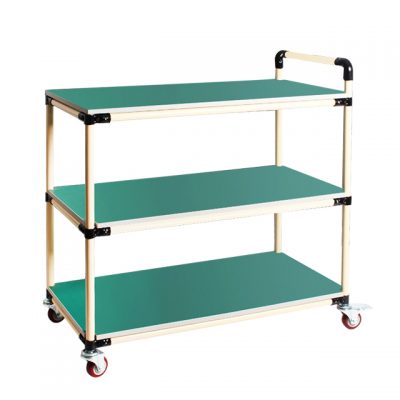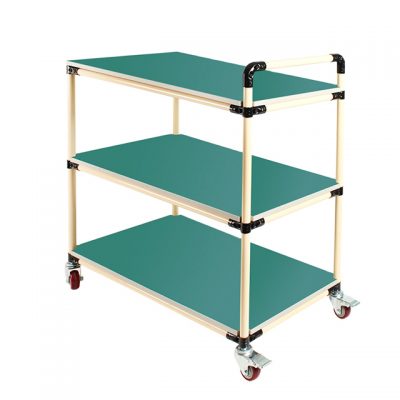Maximizing efficiency in industrial settings is crucial for optimizing productivity, reducing operational costs, and ensuring the safety of workers and processes. Industrial trolleys, also known as carts or material handling carts, play a significant role in achieving this efficiency. Here’s how they contribute and some strategies to maximize their effectiveness:
Role of Industrial Trolleys in Efficiency:
- Material Movement: Industrial trolleys are designed to transport materials, tools, and equipment within a facility. They reduce the need for manual lifting and carrying, saving time and reducing the risk of injuries.
- Workflow Optimization: Trolleys enable organized and streamlined workflows. By providing a dedicated space for tools and materials, they facilitate easy access and reduce the time spent searching for items.
- Batch Transport: Trolleys are effective for moving batches of materials or products together, reducing the number of trips required and enhancing throughput.
- Flexibility: Trolleys come in various sizes and configurations, allowing them to be customized for specific tasks. This flexibility improves their adaptability to different processes and industries.
- Support for Lean Principles: Trolleys can be integrated into lean manufacturing practices, enabling just-in-time deliveries, reducing excess inventory, and minimizing waste.
Strategies to Maximize Efficiency Using Industrial Trolleys:
- Proper Layout and Design: Design workspaces with efficient pathways for trolley movement. Ensure that trolleys can easily navigate through doorways, narrow aisles, and other areas without causing congestion.
- Categorization and Organization: Assign specific trolleys for particular tasks or processes. Use color coding or labeling to differentiate between trolleys meant for different materials or purposes. This minimizes confusion and speeds up material retrieval.
- Ergonomics and Safety: Choose trolleys with ergonomic handles, wheels, and features that reduce strain on workers during pushing and pulling. Implement safety features like brakes, sturdy construction, and anti-tip mechanisms to prevent accidents.
- Regular Maintenance: Keep trolleys in good condition by performing routine maintenance, including checking wheels, lubricating moving parts, and repairing any damage. Well-maintained trolleys function more efficiently and last longer.
- Training and Standardization: Provide training to employees on the proper use of trolleys and the best practices for loading and unloading materials. Establish standardized procedures to ensure consistency and efficiency.
- Demand-Driven Transport: Implement a system where trolleys are dispatched based on real-time demand. This minimizes idle time and ensures materials are moved precisely when needed.
- Integration with Technology: Consider incorporating technologies like RFID or barcoding to track trolley movements and contents accurately. This reduces errors and enhances inventory management.
- Continuous Improvement: Regularly assess the efficiency of trolley usage and gather feedback from employees. Identify bottlenecks, inefficiencies, or areas for improvement and make necessary adjustments.
- Collaborative Work Culture: Encourage collaboration among teams using trolleys. Cross-functional communication can lead to innovative ideas for optimizing trolley use and material flow.
- Sustainability Considerations: Opt for trolleys made from eco-friendly materials and design them for longevity. Additionally, consider implementing energy-efficient practices in trolley movements, such as using electric tugs or autonomous guided vehicles.
By strategically incorporating industrial trolleys into your workflows and continuously refining their usage, you can enhance efficiency, reduce downtime, and create a safer and more productive industrial environment.



















